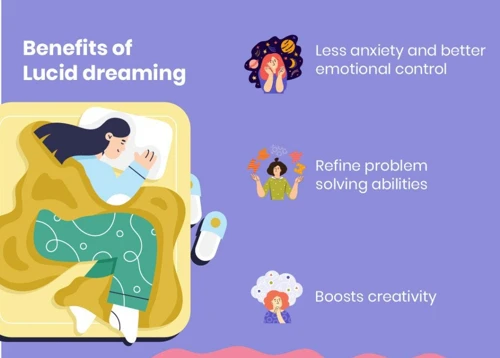Many people are fascinated by the mysterious realm of dreams, where the ordinary rules of reality no longer apply. Among these dreams exists a rare and extraordinary phenomenon known as lucid dreaming. Lucid dreaming occurs when an individual becomes aware that they are dreaming and can actively participate in and even control the events of the dream. While lucid dreaming has long been a subject of curiosity and wonder, recent studies have begun to shed light on its potential role in problem solving and creativity. In this article, we will explore the fascinating connection between lucid dreaming and these cognitive processes, uncovering the scientific evidence behind it and discussing the practical applications it holds. So, fasten your seat belts and get ready to uncover the remarkable world of lucid dreaming!
Understanding Lucid Dreaming
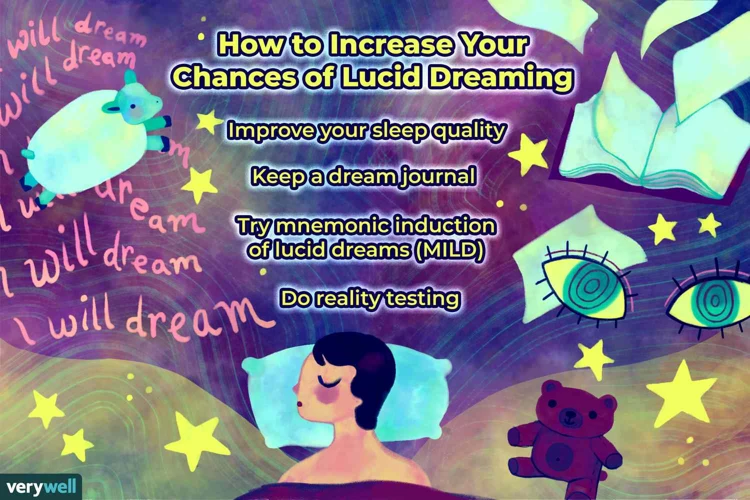
Lucid dreaming is a fascinating phenomenon that allows individuals to experience a heightened state of awareness and control within their dreams. Understanding the nature of lucid dreaming is key to harnessing its potential for problem solving and creativity. Lucid dreams are characterized by the ability to recognize the dream state while dreaming, enabling individuals to actively engage with and manipulate their dream environment. There are various methods to induce lucid dreams, such as reality testing, mnemonic induction, and the wake-back-to-bed method. These techniques aim to increase dream recall and enhance self-awareness within dreams. By exploring the unconscious mind and accessing creative insights, lucid dreaming offers a unique opportunity to tap into our subconscious potential. To delve even deeper into the world of lucid dreaming, one can also explore related practices such as astral projection and lucid dream maintenance. Additionally, lucid dreaming has shown promising potential in managing nightmares and sleep disorders. So, let’s dive into this mysterious realm of lucid dreaming and unlock its secrets, shall we?
Definition and Characteristics
Lucid dreaming is a remarkable state of consciousness where individuals possess awareness and clarity within their dreams. This phenomenon allows dreamers to recognize that they are in a dream while they are actually dreaming. Unlike regular dreams where the dreamer is a passive observer, lucid dreams empower individuals to actively participate and engage with the dream environment. A defining characteristic of lucid dreams is the ability to have agency and control over the dream content, giving dreamers the freedom to manipulate their surroundings, interact with dream characters, and even alter the dream narrative. When in a lucid dream, individuals can experience a heightened sense of self-awareness, often accompanied by a feeling of being awake within the dream. This state of consciousness enables dreamers to engage in deliberate actions, make conscious decisions, and explore the depths of their own subconscious mind. Lucid dreams can range in intensity and duration, with some individuals experiencing brief moments of lucidity while others can maintain prolonged periods of awareness within their dreams. Exploring the world of lucid dreaming opens the gateway to a realm where the boundaries of reality and imagination blur, offering a unique and transformative experience for those who dare to venture into this extraordinary state of consciousness. For more information on related practices and techniques, you can delve into the realm of astral projection and lucid dream maintenance.
Methods to Induce Lucid Dreams
Methods to induce lucid dreams are valuable tools for individuals seeking to explore the realm of lucidity. One popular technique is reality testing, which involves regularly questioning one’s reality throughout the day. By making a habit of performing reality checks, such as looking at one’s hands or questioning whether one is dreaming, individuals can increase their chances of recognizing the dream state when it occurs. Mnemonic Induction of Lucid Dreams (MILD) is another effective method. This technique involves setting intentions before sleep by repeatedly affirming the desire to have a lucid dream while visualizing the experience. Wake-Back-to-Bed (WBTB) is a technique that involves waking up after a few hours of sleep, staying awake for a short period, and then returning to sleep with the intention of entering a lucid dream state. These methods optimize the chances of experiencing a lucid dream and can be combined for even greater effectiveness. If you’re interested in exploring other related practices, such as astral projection or maintaining lucid dreams, you can check out our articles “Exploring Lucid Dreaming and Astral Projection” and “The Importance of Lucid Dream Maintenance”. Additionally, lucid dreaming has been found to be beneficial in managing nightmares and sleep disorders. To learn more about this aspect, you can read our article “The Role of Lucid Dreaming in Nightmare Management and Sleep Disorders”. With these techniques at your disposal, you can actively initiate lucidity and unlock the incredible potential of your dreams.
The Connection between Lucid Dreaming and Problem Solving
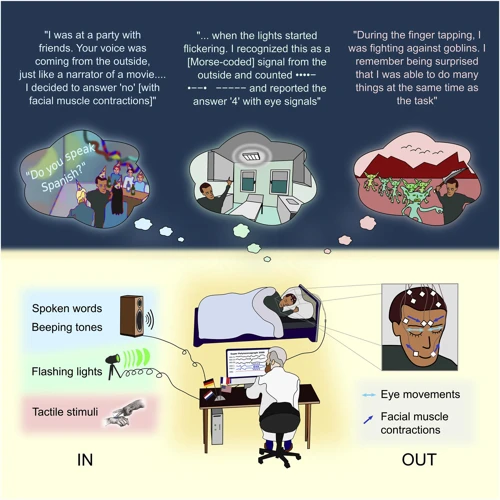
The connection between lucid dreaming and problem solving is a fascinating aspect of this extraordinary phenomenon. When we enter a lucid dream state, we have the unique ability to explore our unconscious mind and tap into our creative potential. By actively participating in and manipulating the dream environment, we can confront and solve problems that may be hindering us in waking life. Lucid dreaming provides a platform for experimentation and allows us to think outside the box, free from the limitations of the physical world. This heightened state of awareness and control within dreams can lead to innovative solutions and fresh perspectives on challenging issues. Lucid dreaming fosters a sense of empowerment and self-efficacy, as we become active problem solvers both in the dream world and in our daily lives. So, whether you’re striving to overcome personal challenges or seeking to enhance your decision-making skills, lucid dreaming offers a remarkable avenue for problem solving and self-discovery.
Exploring the Unconscious Mind
When it comes to lucid dreaming, one of the most intriguing aspects is the opportunity it provides for exploring the unconscious mind. Lucid dreams give us the ability to delve into the depths of our psyche and uncover hidden aspects of ourselves. Through this exploration, we can gain valuable insights into our emotions, desires, and fears. During a lucid dream, individuals can actively engage with dream characters, symbols, and scenarios, all of which are manifestations of their unconscious mind. This process allows for a deeper understanding of the self and can lead to personal growth and development. Exploring the unconscious mind in lucid dreams opens up avenues for self-discovery and self-reflection, providing an opportunity to address unresolved issues and gain clarity on our thought patterns and behaviors. Additionally, it can help us tap into our intuition and access creative solutions to problems we may be facing in our waking lives. Whether it’s confronting fears and anxieties or gaining a better understanding of our aspirations and motivations, lucid dreaming offers a unique and empowering avenue for exploring the hidden depths of the mind.
Accessing Creative Insights
Accessing creative insights is one of the key benefits of lucid dreaming. When we are in a lucid dream state, our minds are free from the constraints of reality, allowing our imagination to roam freely. This heightened state of awareness and control offers a unique opportunity to tap into our subconscious mind and explore the depths of our creativity. In a lucid dream, we can actively engage in creative problem-solving, experimenting with new ideas, and exploring different perspectives. We can visualize and manipulate vivid images, inspiring our artistic endeavors and unlocking new levels of innovation. Additionally, lucid dreaming provides a safe space for trying out new concepts and pushing the boundaries of conventional thinking. Through the ability to control the dream environment, we can simulate scenarios, test out different solutions, and gain valuable insights that can be applied to real-life creative projects. By accessing creative insights in lucid dreams, we can gain a fresh perspective, overcome creative blocks, and uncover hidden potential within ourselves. So, seize the opportunity to harness the power of lucid dreaming and awaken your creativity like never before.
The Scientific Evidence
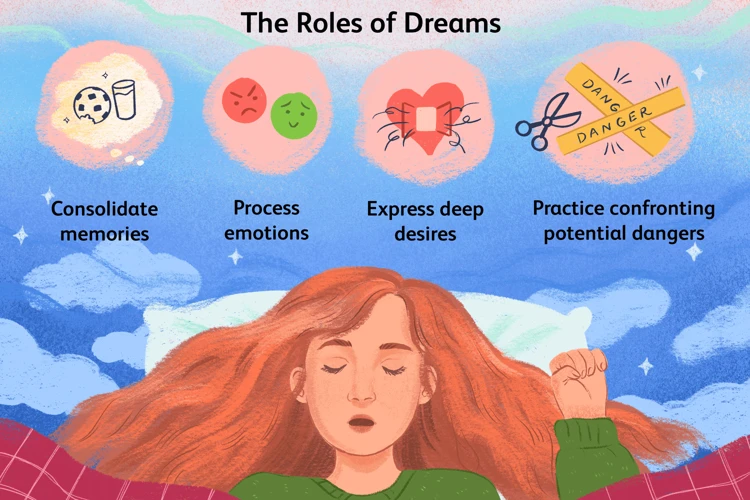
Research into lucid dreaming has provided intriguing insights into the scientific evidence supporting its role in problem solving and creativity. Several studies have demonstrated the occurrence of increased brain activity during lucid dreaming, particularly in regions associated with self-awareness and decision-making, such as the prefrontal cortex. Neuroimaging studies have shown similarities between the brain activity during lucid dreaming and wakeful consciousness, suggesting that lucid dreaming may offer a unique state of consciousness that bridges the gap between dreaming and wakefulness.
In terms of problem-solving abilities, studies have found that individuals who practice lucid dreaming exhibit enhanced problem-solving skills and cognitive flexibility. They are more likely to find innovative solutions to complex problems and are better able to think outside the box. Additionally, lucid dreamers tend to have better dream recall and are able to vividly remember their dreams, which can be beneficial for examining and analyzing dream content for potential problem-solving insights.
Creativity is another area where lucid dreaming shows promising implications. Many artists, musicians, and writers have reported using lucid dreaming as a source of inspiration for their creative endeavors. The ability to actively manipulate the dream environment allows artists to explore new ideas, experiment with different artistic styles, and gain a fresh perspective on their work. This rich source of imagination and creative stimulation can greatly enhance one’s artistic abilities.
While the scientific evidence supporting the role of lucid dreaming in problem solving and creativity is still growing, the existing studies indicate the potential benefits that this phenomenon can offer. As further research continues to unravel the complexities of lucid dreaming, it is clear that this extraordinary experience holds significant promise for unlocking the hidden realms of the mind and expanding our problem-solving capabilities and creative potential.
Practical Applications in Problem Solving
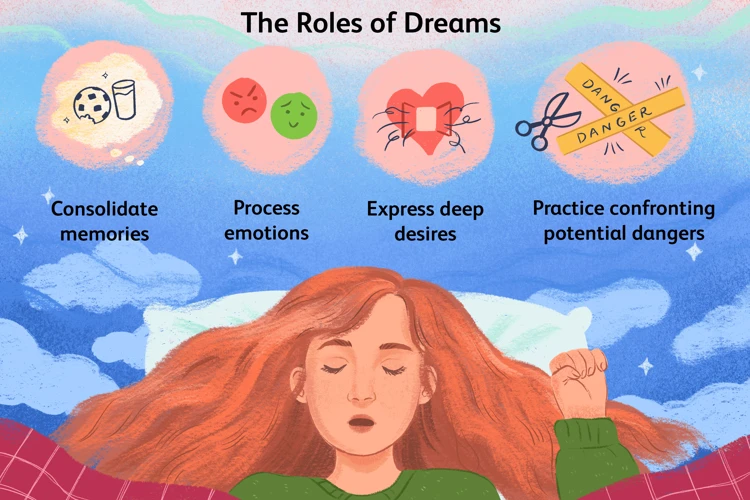
Lucid dreaming has practical applications that go beyond mere entertainment. One of its most intriguing uses is in problem-solving. By tapping into the realm of lucid dreaming, individuals can overcome personal challenges and enhance their decision-making skills. When faced with a problem in waking life, one can set a clear intention before entering a lucid dream, allowing the dream to provide insights and solutions that may not have been apparent in the conscious state. Engaging in dream dialogue, where one interacts with dream characters or asks the dream itself for guidance, can also yield valuable perspectives. The use of dream symbols can be harnessed to uncover hidden meanings and connections. Lucid dreaming provides a unique and immersive platform for creative problem-solving, offering an alternative perspective and giving space for innovative solutions to emerge. So, why not utilize the power of lucid dreaming to tackle your challenges head-on and unlock your problem-solving potential?
Overcoming Personal Challenges
Overcoming personal challenges is a common goal for many individuals, and lucid dreaming can offer a unique approach to tackling these obstacles. Within the realm of lucid dreaming, individuals have the opportunity to confront their fears and anxieties directly. For example, if someone has a fear of public speaking, they can intentionally create a dream scenario where they are delivering a speech in front of a large audience. By repeatedly practicing and succeeding in a lucid dream, individuals can gradually build confidence and reduce their anxiety in real-life situations. Lucid dreaming also provides a safe space to explore and experiment with different solutions to personal challenges. With the ability to control and manipulate the dream environment, individuals can try out new approaches, test different strategies, and gain insights that may prove beneficial in their waking lives. The emotional catharsis experienced in lucid dreams can aid in processing and resolving past traumas or deeply rooted emotional issues. By actively engaging with these challenges in the dream state, individuals can facilitate healing and growth in their waking lives. So, whether it’s conquering fears, finding innovative solutions, or seeking emotional healing, lucid dreaming holds tremendous potential in helping individuals overcome personal challenges and achieve personal growth.
Enhancing Decision-making Skills
Enhancing decision-making skills through lucid dreaming is a unique and powerful tool. When we are in a lucid dream, we have the ability to consciously explore various scenarios and make decisions within the dream environment. This presents a valuable opportunity to practice decision-making in a safe and controlled setting. By intentionally setting intentions before entering a lucid dream, individuals can focus on specific decisions they would like to improve upon. They can then examine different options and their potential outcomes, experimenting with various choices and consequences. This allows individuals to gain valuable insights into their decision-making processes and helps them develop their capacity for critical thinking, problem-solving, and weighing pros and cons. Lucid dreams provide an immersive and experiential learning environment, stimulating the brain and fostering creativity and innovation in decision-making. By honing decision-making skills through lucid dreaming, individuals can transfer these enhanced abilities to their waking lives, improving their ability to make well-informed and confident decisions.
Boosting Creativity through Lucid Dreaming
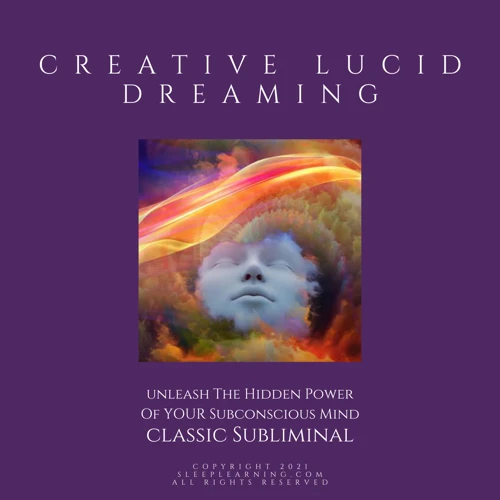
Lucid dreaming not only provides a platform for problem solving but also serves as a powerful tool for boosting creativity. When we become aware that we are dreaming, we gain the ability to actively shape and manipulate the dream environment. This freedom allows our imagination to soar, unleashing a world of limitless possibilities. Lucid dreaming can serve as a wellspring of inspiration for artistic endeavors, as we can explore vivid landscapes, encounter fascinating characters, and experience extraordinary events that may seem impossible in waking life. The visual and sensory richness of lucid dreams can be harnessed to generate new ideas, explore different perspectives, and break through creative blocks. From painting to writing, music to dance, lucid dreaming offers a wealth of raw material and innovative concepts to fuel artistic expression. So, immerse yourself in the canvas of your dreams, let your creativity run wild, and watch as the boundaries of your imagination expand with each lucid dream experience.
Unleashing the Imagination
Unleashing the imagination is one of the remarkable benefits of lucid dreaming. When we are in a lucid dream state, the boundaries of reality no longer constrain us, allowing our creativity to flourish. In a lucid dream, we have the freedom to explore fantastical landscapes, interact with mythical creatures, and embark on extraordinary adventures. This unrestrained environment ignites our imagination and opens up a world of endless possibilities. We can experiment with new ideas, concepts, and scenarios that may not be feasible or practical in waking life. This unleashing of the imagination can be particularly helpful for individuals in creative fields such as art, writing, or innovation, as it provides a unique space for brainstorming and ideation. In a lucid dream, we can push the boundaries of what we believe is possible, leading to innovative and unconventional ideas. By actively engaging in lucid dreams and embracing the limitless nature of our imagination, we can tap into a wellspring of creativity and harness it to solve problems and achieve artistic breakthroughs in our waking lives. So, set your imagination free during lucid dreaming and watch as it paints vivid pictures and brings forth ideas that transcend the ordinary.
Inspiration for Artistic Endeavors
Artistic endeavors often thrive on inspiration, and lucid dreaming can be a powerful source of creative stimulation. When in a lucid dream state, individuals have the ability to explore vivid and imaginative landscapes, interact with interesting characters, and witness extraordinary events. This rich and immersive dream world can offer a wealth of inspiration for artists of all kinds, including painters, writers, musicians, and filmmakers. In a lucid dream, one can experiment with different art styles, produce surreal visuals, or compose unique melodies that transcend the boundaries of waking reality. The freedom from physical limitations and social constraints in the dream world allows for uninhibited creative expression.
| Key Points | Benefits |
|---|---|
| 1. Immersive dream environments | Inspire original ideas and concepts. |
| 2. Interaction with dream characters | Provides unique perspectives and narratives. |
| 3. Experimentation with art forms | Encourages innovation and pushes creative boundaries. |
| 4. Freedom from limitations | Allows artists to explore unconventional approaches. |
Artists who engage in lucid dreaming often report vivid dreams that are filled with stunning visual imagery, surreal landscapes, and captivating narratives. They can consciously manipulate their dream environment, summoning objects, altering scenes, and even interacting with dream characters who can provide unique perspectives and narratives. These interactions and observations in the dream world can serve as valuable sources of inspiration for artists seeking fresh ideas and innovative concepts. The creative experimentation and exploration of various art forms within the lucid dreaming experience can unlock new ways of approaching artistic expression in the waking world. Lucid dreaming offers artists the freedom to break free from conventional techniques and conventions, encouraging them to push the boundaries of their creativity and produce truly original and thought-provoking works of art.
Techniques for Lucid Dreaming
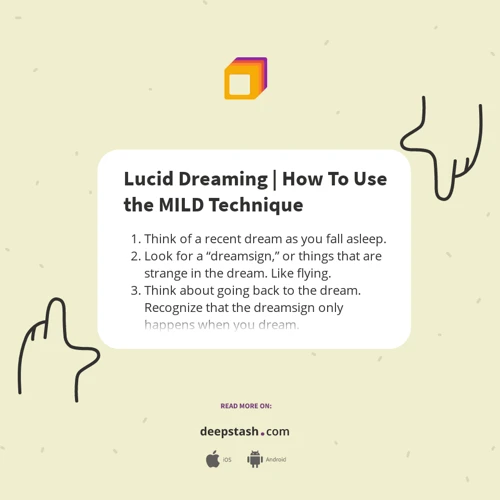
Unlocking the world of lucid dreaming requires mastering various techniques that can help individuals induce and maintain lucid dreams. One popular technique is reality testing, where individuals regularly question their reality throughout the day, aiming to develop the habit of questioning their dream state as well. Mnemonic Induction of Lucid Dreams (MILD) involves repeating a mantra or affirmation before going to sleep, which reinforces the intention to become lucid in dreams. Another technique is the Wake-Back-to-Bed (WBTB) method, where individuals set an alarm to wake up during the night, stay awake for a short period, and then go back to sleep with the clear intention of having a lucid dream. By practicing these techniques consistently and with patience, individuals can increase their chances of experiencing lucid dreams and exploring the boundless possibilities that await within their dreaming consciousness.
Reality Testing
Reality testing is a technique used to increase self-awareness and trigger lucidity within dreams. It involves regularly questioning one’s reality throughout the day to form a habit that extends into the dream state. By regularly performing reality checks, individuals train their minds to question whether they are in a dream or awake. Common reality testing methods include:
1. Hand Check: Throughout the day, observe your hands and examine their appearance. In dreams, hands often appear distorted or have unusual characteristics such as extra fingers or changing shapes. By regularly checking your hands during waking hours, you are more likely to perform the same check in a dream and trigger lucidity.
2. Text and Numbers: Look at written text or numbers, such as signs or clocks, and observe if they change or become distorted. In dreams, text and numbers often appear blurry or change randomly. By regularly checking the stability of text and numbers in your surroundings, you can train your mind to question reality in dreams as well.
3. Mirror Check: Look at your reflection in a mirror and observe if it behaves normally. In dreams, mirrors often reflect distorted or unusual images. By habitually checking your reflection, you increase the likelihood of questioning your reality within a dream.
4. Physical Sensations: Pay attention to physical sensations throughout the day, such as the feeling of objects or the sensation of the ground beneath your feet. In dreams, these sensations may feel different or surreal. By regularly grounding yourself and focusing on your physical senses, you can develop a habit of questioning reality within dreams.
Remember, the key to effective reality testing is consistency and mindfulness. By incorporating these reality checks into your daily routine, you are training your mind to question the nature of reality in both waking and dreaming states. This habit can significantly increase your chances of becoming lucid in a dream and engaging in problem-solving and creative activities within the dream world.
Mnemonic Induction of Lucid Dreams (MILD)
Mnemonic Induction of Lucid Dreams (MILD) is a popular technique used to induce lucid dreams. This method focuses on increasing dream recall and strengthening the intention to become lucid. The main idea behind MILD is to set a strong intention to recognize when you are dreaming. Here’s how the MILD technique works:
1. Bedtime Routine: Before going to sleep, establish a bedtime routine that includes reviewing your dream journal. This helps enhance your dream recall abilities and improves your overall dream awareness.
2. Mantra: As you lay in bed, repeat a specific phrase or mantra to yourself. For example, you could say, “Tonight, I will have a lucid dream.” Repeat this phrase with conviction and intention, emphasizing the desire to recognize that you are dreaming.
3. Visualization: Visualize yourself in a recent dream, but this time, imagine yourself becoming aware that you are dreaming. Picture yourself performing reality checks and becoming lucid. This visualization helps reinforce the intention to become lucid in your dreams.
4. Set an Alarm: Set an alarm to wake you up after approximately 4-6 hours of sleep. This alarm should interrupt your REM sleep, which is when dreams occur most frequently. The purpose of this step is to wake up during the REM sleep stage to increase the likelihood of having a lucid dream.
5. Dream Recall: Upon waking up from the alarm, stay still and try to recall your dreams in as much detail as possible. Write them down in your dream journal if necessary. This step helps strengthen your dream recall abilities and sets the stage for having a lucid dream.
6. Return to Sleep: After recording your dreams, go back to sleep while repeating your mantra from earlier. Visualize yourself becoming aware in your dreams and affirm your intention to have a lucid dream.
The MILD technique harnesses the power of intention and visualization to increase your chances of having a lucid dream. By following this method consistently and with dedication, you can improve your ability to become aware within your dreams and unlock the potential for problem solving and creativity that lucid dreaming offers. So, give the MILD technique a try and start exploring the wonders of lucid dreaming!
Wake-Back-to-Bed (WBTB) Method
The Wake-Back-to-Bed (WBTB) Method is a technique commonly used to induce lucid dreams by interrupting sleep and then returning to it. The process involves waking up after several hours of sleep, typically during the REM (Rapid Eye Movement) stage, which is associated with dreaming. During this brief period of awakening, the dreamer is encouraged to engage in activities that promote wakefulness and alertness, such as reading about lucid dreaming, journaling dream experiences, or practicing meditation. This interruption in sleep serves to heighten awareness and increase the chances of entering a lucid dreaming state upon returning to sleep. The rationale behind the WBTB method is that it capitalizes on the natural tendency of REM sleep to increase in duration throughout the night. By waking up during the later part of the sleep cycle and then going back to sleep, the chances of directly entering a REM period are higher, creating a more favorable environment for lucid dreaming to occur. This technique can be particularly effective when combined with other methods, such as reality testing and mnemonic induction, to enhance lucidity within dreams. So, if you’re looking to explore the power of lucid dreaming, the Wake-Back-to-Bed method might just be the key to unlocking captivating dream adventures and harnessing your creativity and problem-solving skills.
Tips for Problem Solving and Creativity in Lucid Dreams
When it comes to problem solving and creativity in lucid dreams, there are several tips and strategies that can help individuals make the most of their dream experiences. Setting clear intentions before sleep can increase the likelihood of having lucid dreams and focusing them on specific problems or creative endeavors. Engaging in dream dialogue is another useful technique, where dreamers can ask their dreams questions or seek guidance from dream characters. Additionally, utilizing dream symbols can lead to valuable insights by paying attention to recurring themes or symbols within the dreamscape. Keeping a dream journal can help in identifying patterns and recurring symbols to further deepen the understanding of one’s dreams. It is also important to remember that problem solving and creativity in lucid dreams requires practice and patience, so it’s recommended to experiment with different techniques and approaches to find what works best for each individual. So, armed with these tips, dreamers can embark on a journey of problem solving and creative exploration within their lucid dreams.
Setting Clear Intentions
Setting clear intentions is a crucial aspect of lucid dreaming that can greatly enhance problem-solving and creativity within the dream state. When it comes to setting clear intentions, it means having a specific goal or objective in mind before entering the dream world. This can be done through repetition of a specific affirmation or visualization exercises before going to sleep. By setting clear intentions, you are programming your subconscious mind to focus on a particular problem or creative endeavor during your lucid dream. This intention acts as a mental blueprint that guides your dream experience and directs your attention towards the problem you want to solve or the creative ideas you want to explore. Visualizing the desired outcome or mentally rehearsing how you will approach the problem can further reinforce your intentions in the dream state. It is essential to remember that the clarity and specificity of your intention will determine the effectiveness of problem-solving and creative insights you gain during the lucid dream. So, take the time to clearly define your intention before entering the world of lucid dreaming and watch as your subconscious mind unveils innovative solutions and imaginative ideas.
Engaging in Dream Dialogue
Engaging in dream dialogue is an intriguing technique that can be used during lucid dreaming to enhance problem-solving and creativity. During a lucid dream, individuals have the unique opportunity to interact with the dream characters and environment. By engaging in a dialogue with these dream elements, individuals can gain valuable insights and perspectives that can help in problem-solving and creative endeavors.
One way to engage in dream dialogue is to initiate conversations with the dream characters. These characters can represent different aspects of the dreamer’s subconscious mind, and by interacting with them, the dreamer can gain a deeper understanding of their own thoughts, emotions, and desires. The dream characters may provide guidance, offer solutions, or present alternative viewpoints that can inspire new ideas and approaches to real-life challenges.
Another method of dream dialogue is through the use of dream symbols. Dream symbols are objects, actions, or events that hold personal meaning to the dreamer. By paying attention to these symbols and engaging with them, individuals can uncover hidden messages or insights from their subconscious mind. For example, if a dreamer encounters a recurring symbol like a locked door, they can engage in a conversation with the door, asking it what it represents or why it is appearing in their dreams. This dialogue can lead to a deeper understanding of the dream’s message and how it relates to their waking life.
Engaging in dream dialogue requires a level of self-awareness and intention. Before going to sleep, setting an intention to engage in dream dialogue can help the dreamer become more conscious and receptive during their dreams. Journaling dreams upon waking can also help the dreamer reflect on the dialogue that took place and extract valuable insights or connections to waking life.
By actively engaging in dream dialogue, individuals can tap into their subconscious wisdom and gain fresh perspectives on their problems or creative projects. It is a powerful tool that allows them to harness the immense potential of their dreams and translate it into waking life for problem-solving and creative endeavors. So, the next time you find yourself in a lucid dream, don’t hesitate to strike up a conversation and see where it takes you!
Utilizing Dream Symbols
Utilizing dream symbols is a powerful technique for problem solving and enhancing creativity within the realm of lucid dreaming. Dreams are often filled with rich symbolism that can provide valuable insights and inspiration. When engaged in lucid dreaming, individuals can consciously explore and interpret these symbols to gain a deeper understanding of their subconscious thoughts and emotions. One way to utilize dream symbols is to keep a dream journal, where one can record and analyze the symbols that appear in their dreams. By noting recurring symbols or themes, patterns may emerge that can offer clues to unresolved issues or creative ideas. Another technique is to actively engage with dream symbols during lucid dreams. By directly interacting with symbols, such as objects, characters, or landscapes, individuals can ask them questions, seek guidance, or even transform them to gain new perspectives. This process of dialoguing with dream symbols can lead to profound insights and creative breakthroughs. By recognizing and consciously utilizing dream symbols, lucid dreamers can unlock the hidden wisdom of their dreams and leverage it to solve problems and spark innovative ideas.
Conclusion
In conclusion, lucid dreaming holds great potential as a tool for problem solving and enhancing creativity. It provides a unique and powerful way to explore the depths of our subconscious mind, unlocking hidden insights and unleashing our creative potential. By actively engaging with our dreams and accessing the vast resources of our unconscious, we can tap into a wellspring of ideas and solutions that can benefit various aspects of our lives. The scientific evidence supporting the role of lucid dreaming in problem solving and creativity is steadily growing, validating the experiences of countless individuals who have harnessed the power of their dreams. Whether it’s overcoming personal challenges, enhancing decision-making skills, boosting artistic endeavors, or simply gaining a new perspective on life, lucid dreaming offers a world of possibilities. It is a realm where the boundaries of reality are blurred, allowing us to transcend our limitations and explore the limitless depths of our own imagination. So, embrace the power of lucid dreaming, set your intentions, and embark on this extraordinary journey of self-discovery and creativity. The dream world beckons, ready to reveal its secrets and inspire us in ways we could never imagine. It’s time to awaken the dreamer within and see where the path of lucid dreaming takes you.
Frequently Asked Questions
What is the meaning of lucid dreaming?
Lucid dreaming refers to the state of being aware that you are dreaming while still in the dream itself. It allows you to have control over the dream and actively participate in its unfolding.
How can I induce lucid dreams?
There are several methods to induce lucid dreams, such as reality testing, where you consistently question your reality throughout the day. Other techniques include mnemonic induction, where you repeat the intention to become lucid before falling asleep, and the wake-back-to-bed method, where you wake up in the middle of the night and then go back to sleep while maintaining awareness.
What benefits can lucid dreaming offer?
Lucid dreaming can offer a range of benefits, including problem-solving, enhanced creativity, and personal growth. It provides a platform to explore the unconscious mind, access creative insights, and overcome personal challenges.
Is it possible to learn lucid dreaming?
Yes, with practice and the right techniques, it is possible to learn how to have lucid dreams. By incorporating certain strategies and consistent effort, anyone can increase their chances of experiencing lucid dreams.
Is lucid dreaming scientifically proven?
While the subjective nature of dreams makes it challenging to conduct extensive scientific research, there is growing evidence to support the existence of lucid dreaming. Numerous studies have provided empirical data on the phenomenon, including brain activity patterns during lucid dreams.
Can lucid dreaming help overcome personal challenges?
Yes, lucid dreaming can be a powerful tool for personal growth and overcoming challenges. By accessing the subconscious mind, individuals can confront fears, practice new skills, and gain insights into their emotions and behavior.
Can lucid dreaming improve decision-making skills?
Absolutely. Lucid dreaming provides a unique environment to practice decision-making and problem-solving skills. By actively engaging with dream scenarios, individuals can enhance their ability to make quick and effective decisions in real-life situations.
Is lucid dreaming the same as astral projection?
No, lucid dreaming and astral projection are two distinct experiences. Lucid dreaming involves being aware and in control within a dream, while astral projection refers to an out-of-body experience where the individual’s consciousness separates from the physical body and explores the astral plane.
Can lucid dreaming be used to manage nightmares?
Yes, lucid dreaming can be an effective technique for managing nightmares. By becoming aware that you are dreaming, you can consciously alter the dream’s outcome, confront fears, and transform negative experiences into positive ones.
Is lucid dreaming suitable for everyone?
Lucid dreaming is generally safe for most individuals. However, it may require practice and patience to achieve consistent lucid dreams. It is important to maintain a balanced sleep routine and consult with a healthcare professional if you have any underlying sleep disorders.

